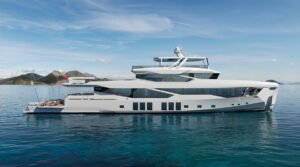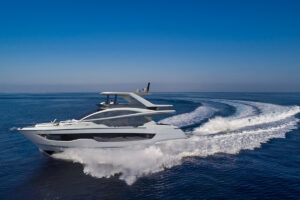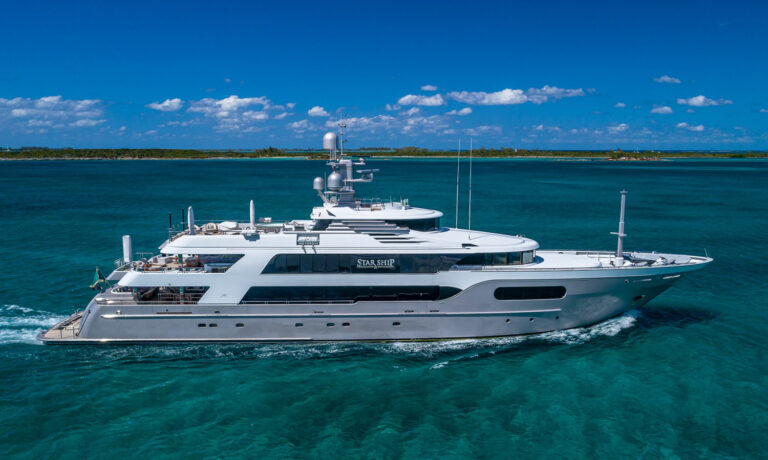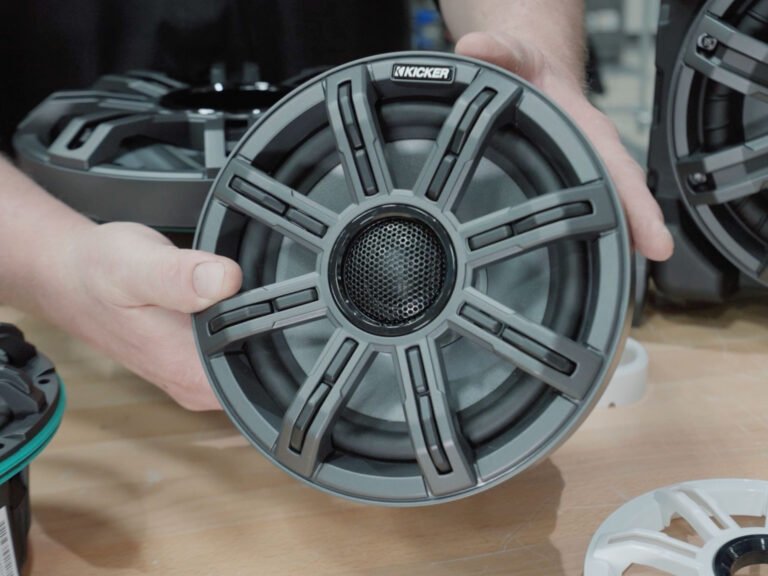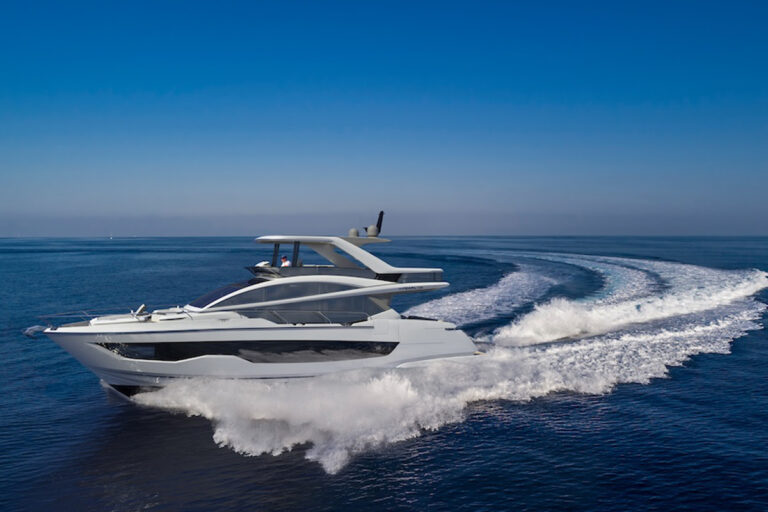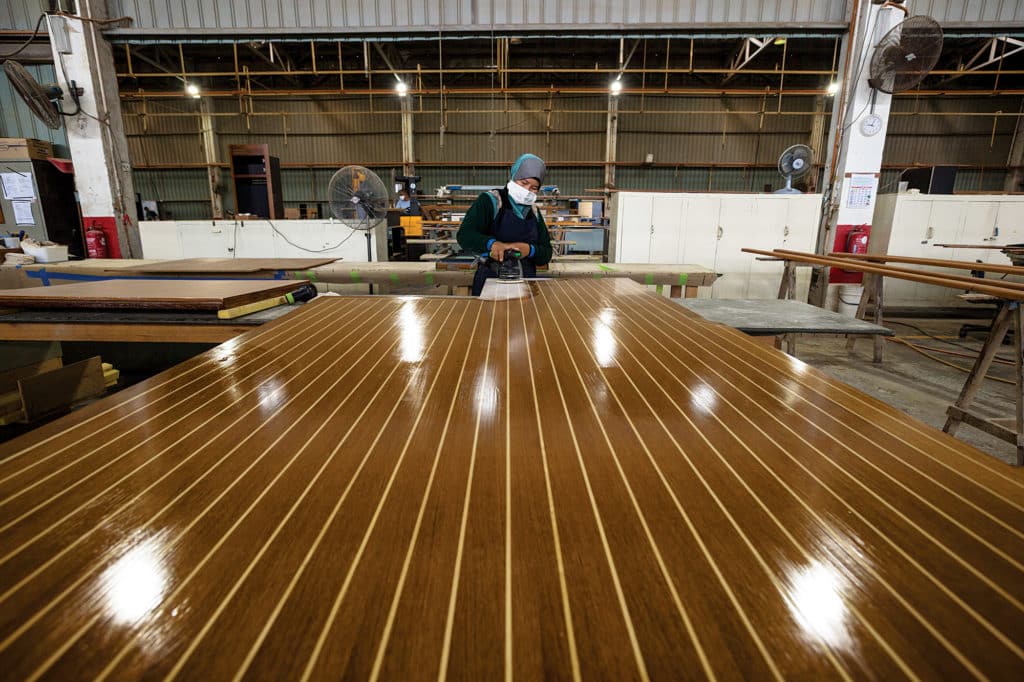
Johor Bahru, Malaysia, home of the Grand Banks Yachts factory, is quite literally on the other side of the world from large swaths of America. The time difference between there and the U.S. East Coast is a bracing 13 hours. Undomesticated dogs that resemble coyotes trot treacherously close to highways buzzing with motorbike traffic, each bike in some wild state of disrepair. Just a single degree north of the equator, the city gets baptized by the heavens every day at 4 p.m. during the rainy season. It’s a good time to be indoors. And it’s a particularly good time to be indoors in the Grand Banks factory, where visitors are transported from one world back into a whole other one that is clean, modern and tech-forward — all the way through the looking glass, or perhaps in this case, the handlaid fiberglass.

The Ground Floor
The overriding theme among the workers on the Grand Banks factory floor is pride in their skills and happiness with their jobs. There’s a surprising amount of longevity in the careers here. The woman in the photograph at right is Lily Arabian Bte Palalwee. She has been with the company for 22 years, mostly doing paint and varnish work.
She says her favorite part of the job is the people she works with.
“I’m happy here, and my co-workers are happy too,” she says. “There is no tension on the floor. When I started here, I was 17 and single. Now I am married and have three children — 11,13 and 17. I don’t know if I could have done that without this job. Also, sometimes they take us out on the boats when they are finished, and this gives me a great feeling of pride in my job.”
After some back-and-forth with a translator, I was able to ascertain that the man in the photograph at left has been with Grand Banks for 20 years, doing mostly varnishing. He clearly took a lot of pride in his work. And his distinct hat keeps things colorful and illustrates the general feeling of bonhomie among the local working class. My translator ran out of English, and my Malay admittedly needs some brushing up, so I couldn’t quite get the backstory on the hat, even though I wanted to learn more. But it didn’t matter. This was a happy, focused man fully invested in his work. That much was obvious.
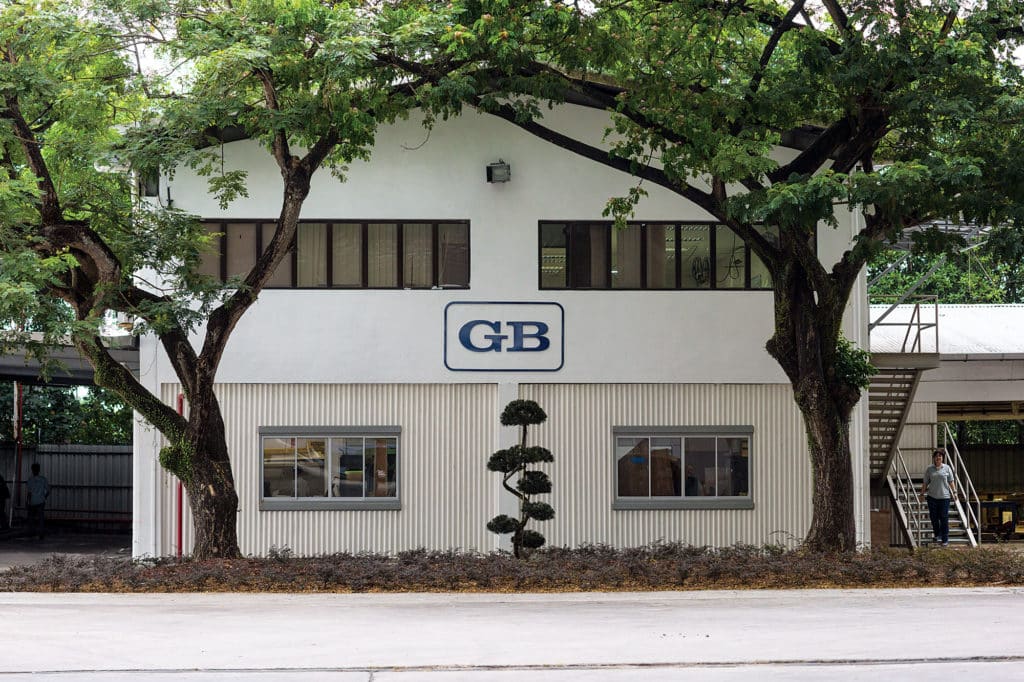
SPOKES ON THE WHEEL
Grand Banks is a much-hallowed builder with a, dare we say, grand tradition. But that doesn’t mean the company isn’t forward-thinking. That attitude was cemented when Grand Banks bought Australia’s Palm Beach Motor Yachts in 2014, in a well-founded effort to round out its product offerings. Now both Palm Beach and Grand Banks yachts, as well as the company’s Eastbay line, are all built in the same facility in Johor Bahru.

Middle of Everything
Grand Banks takes great care to make sure its manual laborers are overseen by highly knowledgeable boatbuilders, many with pedigrees that include long stints at some of the Western world’s top yards. The (mostly) men work closely with the locals to ensure build quality.
One such overseer is David Oliver Smith (at left in the photograph top right), a 54-year-old Irishman who’s been building yachts for 36 years, many of them with Sunseeker. “I train these guys personally,” he says. “You’ve got to get them to the point where you can trust them with their tasks, and I’ve gotten to that point. I trust them. I’m learning their language, and that’s a little gesture, but it goes such a long way in developing trust among co-workers.”
Smith has bounced around the world building boats, and his wife and two daughters live in Australia. So how’d he wind up so far from home, in Malaysia? The Irishman lets a wry grin spread across his face: “Just drinking in the wrong bars, I guess!”
The Tom Berenger look-alike in the photograph at right is Angus Macneil, another supervisor, who hails from New Zealand and has 20-plus years of boatbuilding experience. He echoes Smith’s take on the workforce. “The Malaysians are wonderful people,” he says. “They have the best attitudes, and they’ll do anything for you. The boats we build here are beautiful, and having a workforce like this is a big reason why. And once we get going and things really ratchet up, we’re only going to get better.”

BANK ON IT
The Grand Banks 60 is at the forefront of the company’s push in a new direction. The yacht, with classic lines, will actually be 65 feet length overall and have a 19-foot-2-inch beam, while drawing 3 feet 6 inches. Among many notable traits, the 60 will have a cruise speed of 32 knots, a top-end of 37 knots, loads of carbon fiber above the sheer line and Express Joystick Systems at three control stations. This is the boat Grand Banks is betting on to forge a bright future.
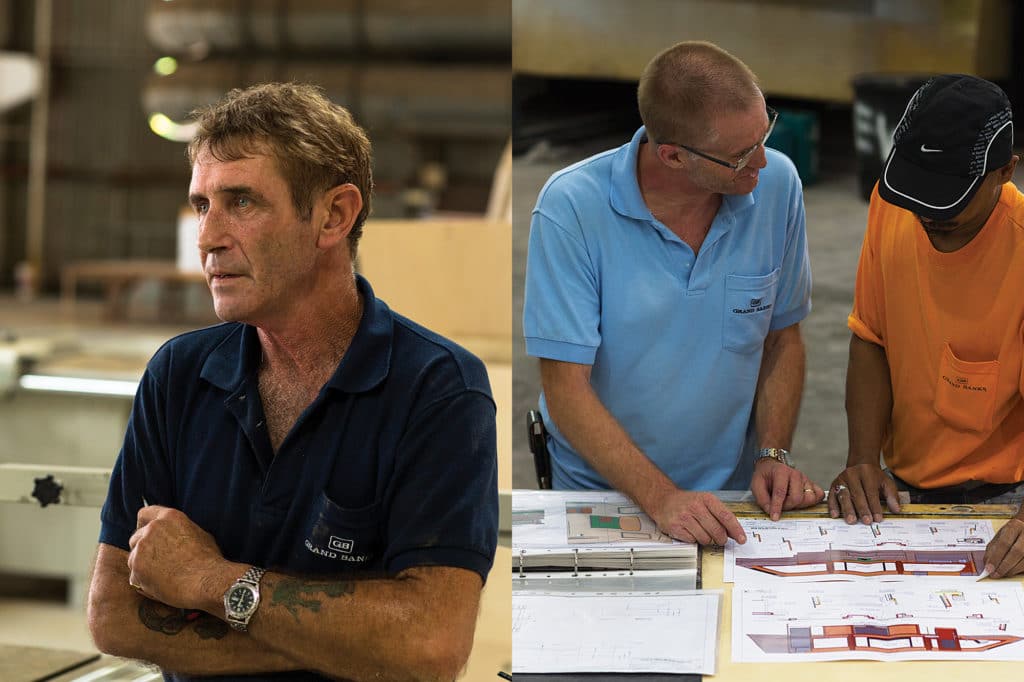
The Hand That Rocks the Boat
Grand Banks is nothing if not a top-down company. When you’re building yachts in a country that doesn’t have a traditionally strong yacht-building culture, you have to import that culture. And when Grand Banks acquired Palm Beach, it did just that. The culture-setting all starts with Mark Richards. At about 6-foot-4 with pale blue eyes and a specifically Aussie machismo, Richards is a force of nature with a boating pedigree that humbles most. The eight-time Rolex Sydney Hobart champion knows as much about boats, and boatbuilding, as anyone in the industry. And he’s not the type of CEO who spends all his time out on the golf course slapping backs and making deals.
Richards is often in the factory, greeting all the workers by name and staying on top of details.
“Within a half-hour of seeing this factory, I knew we could make it work,” he says. “It’s a big pool, but I jumped into the deep end and started swimming. We’re changing the culture here. We’re all about precision. We’ve got an eight-axis router coming in. People may have questions about building boats in Malaysia, but I believe that you can teach anyone to do anything. And I think these new boats we’re building are proving that.”
Richards’ right-hand man, Hank Compton, agrees. “I think the technical quality of these boats, particularly the Grand Banks 60, is really going to impress people,” he says. “Everything above the sheer line is carbon fiber. Just think about how that translates into fuel efficiency, not to mention center of gravity. It’s highly technical stuff. The people that work here are clearly proud of what they’re accomplishing, and that’s no accident.”
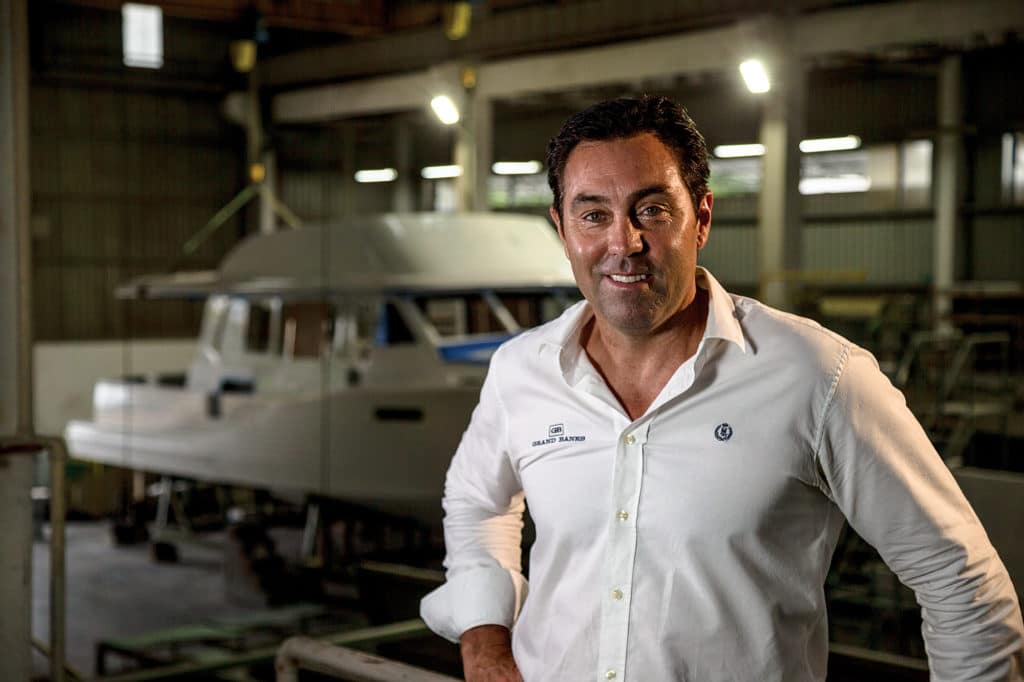
Singing Praises
If you’re headed to the Johor Bahru factory, you’re most likely flying into Singapore, which is just a few miles away (though traffic can be a bear). Regardless, lucky you. Singapore’s Changi Airport has been voted the world’s best, four years running, at the Skytrax World Airport Awards in Cologne, Germany. Changi Airport has luxury shops, free Wi-Fi and even a movie theater. In an airport. And if you decide to stay in Singapore for your trip — not a bad option considering that Johor Bahru, though not without its charms, is a mostly industrial city — you’re in for another treat. Or, more accurately, you’re in for a bunch of treats.
None other than world-traveling gourmand and TV show host Anthony Bourdain describes the city-state like so: “For a gastro-tourist, somebody who travels to eat, any kind of serious eater, Singapore’s probably the best place you can go for maximum bang in a minimum period of time.” High praise indeed. So there you have it. Go for the yacht but stay for the Wah Feng wonton noodles.



